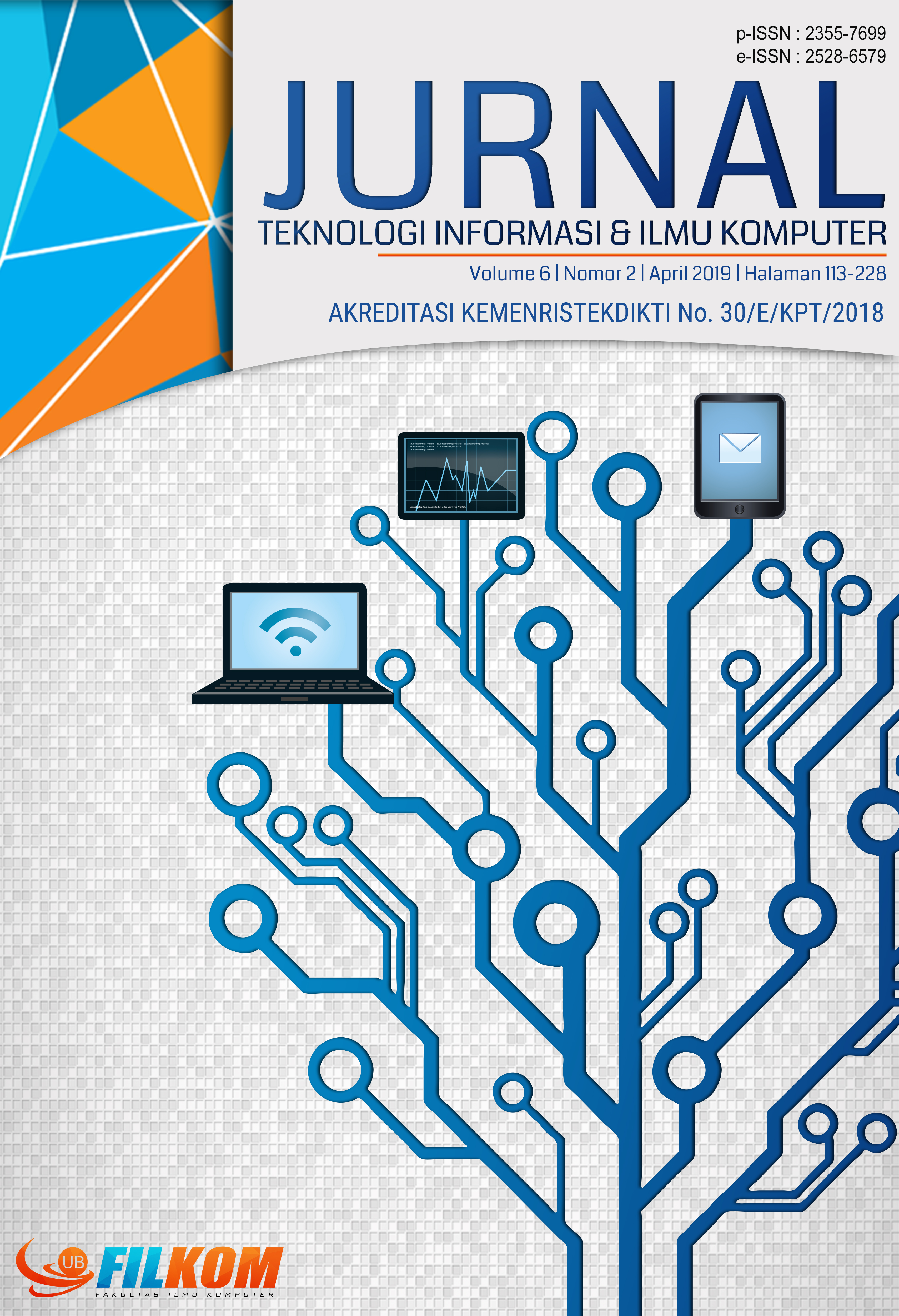Analisis Kesenjangan dan Pemodelan Proses Bisnis Human Capital Management pada PTPN XI berdasarkan Best Practice SAP
DOI:
https://doi.org/10.25126/jtiik.201962937Kata Kunci:
Pemodelan Proses Bisnis, Enterprise Resource Planning (ERP), SAP, Human Capital ManagementAbstrak
Revolusi industri 4.0 dan persaingan bisnis yang semakin ketat menjadikan TI sebagai pendukung dalam pencapaian tujuan bisnis utama sebuah perusahaan. Salah satu bentuk dukungan TI dalam organisasi adalah penggunaan perangkat lunak Enterprise Resource Planning (ERP) dalam pengelolaan sumber daya perusahaan. Akan tetapi, dalam banyak kasus implementasi SAP tidak selalu membawa dampak sesuai dengan ekspektasi perusahaan. Hal ini disebabkan SAP menggunakan best practice yang belum tentu memiliki tingkat kesesuaian dengan proses bisnis perusahaan. Sehingga terdapat kesenjangan (gap) antara proses bisnis perusahaan yang digunakan sebagai acuan best practice oleh SAP dan perusahaan yang akan mengimplementasikan sistem ERP. Penelitian ini bertujuan untuk menyusun dokumen pemodelan proses bisnis as-is dan to-be serta mengidentifikasi kesenjangan antara proses bisnis yang sedang berjalan saat ini dengan proses bisnis pada best practice SAP khususnya pada modul Human Capital Management, salah satu modul utama SAP yang memainkan peran penting dalam membangun manajemen sumber daya yang baik di perusahaan. Hasil analisis kesenjangan memperlihatkan perubahan apa saja yang terjadi pada komponen proses bisnis, baik dari sisi aktivitas, sumber daya yang terlibat, kebutuhan kebijakan, dan struktur organisasi. Perubahan yang terjadi karena penerapan SAP sebagai sistem informasi SDM tentunya membawa dampak. Dampak yang diperoleh dari penerapan teknologi biasa disebut dengan nilai (value). Nilai tersebut berupa manfaat yang mengacu kepada peningkatan efisiensi proses kerja yang diterapkan dalam organisasi.
Abstract
Industrial revolution 4.0 and increasingly fierce business competition make IT as main supporter in achieving the main business objectives of an enterprise. One form of IT support within organizations is the use of Enterprise Resource Planning (ERP) software in enterprise resource management. However, the result of many SAP implementation cases do not always in line with the company expectations. This is because SAP used best practices that do not have the same level of compatibility with the company's business processes. Hence, there is a gap between the company's business processes used as the best practice reference by SAP and the company that will implement the ERP system. This study aims to establish as-is and to-be business process modeling documents and identify the gaps between current business processes of the organization and business processes in SAP best practices especially in the Human Capital Management module, one of SAP's main modules that plays an important role in building good resource management in the company. The gap analysis results show what changes occur in the business processes components in terms of activity, the resources involved, policy requirements, and organizational structure. These changes certainly would have some impacts. The impacts is usually called as value. This value is in the form of benefits that refer to an increase in the efficiency of work processes applied in the organization
Downloads
Referensi
ALI, A. H. N., DARMANINGRAT, E. W. T. & ANUNDRA, R. N., 2016. Identifikasi Aktivitas Manajemen Perubahan Organisasi pada Implementasi ERP di PT Perkebunan Nusantara XI Menggunakan Model ADKAR. Surabaya, The 2nd Conference on Innovation and Industrial Applications (CINIA).
ANASTHASIA, K. I., 2011. Teknologi Informasi dalam Organisasi, Jimbaran: SCRIBD.
CASCIO, W. F., 1990. Applied Psychology in Personnel Management. 4th penyunt. New Jersey: Prentice Hall College.
CRAIGER, J. P., 1996. Society for Industrial and Organizational Psychology. [Online] Available at: http://www.siop.org/tip/backissues/tipjan97/craiger.aspx
[Diakses 11 August 2015].
DAVENPORT, T. H., 1993. Process Innovation: Reengineering Work through Information
Technology. Boston, Massachusetts: Harvard Business School Press.
INDRAJIT, R. E., 2001. Manajemen Sistem Informasi dan Teknologi Informasi. Jakarta: Elex Media Komputindo.
PARKER, M. M., Benson, R. J. & Trainor, H. E., 1988. Information Economics: Linking Business Performance to Information Technology. 1st penyunt. New Jersey: Pearson College Div.
PTPN XI, 2013. About. [Online]
Available at: http://www.ptpn-11.com/about
[Diakses 11 August 2015].
RANTI, B., 2008. The Generic IS/IT Business Value Category: Cases in Indonesia. Jakarta, Konferensi dan Temu Nasional Teknologi Informasi dan Komunikasi untuk Indonesia.
SAP, 2016. SAP Best Practice. [Online]
Available at: https://help.sap.com/viewer/p/SAP_Best_Practices
[Diakses 29 February 2016].
SCHEER, A. W., Thomas, O. & Adam, O., 2005. Process Modeling Using Event-Driven Process Chains. Dalam: W. v. d. A. A. H. M. t. H. Marlon Dumas, penyunt. Process-Aware Information Systems. New Jersey: John Wiley & Sons, pp. 119-144.
UMBLE, E. J., Haft, R. R. & Umble, M., 2003. Enterprise resource planning: Implementation procedures and critical success factors. European Journal of Operational Research, 146(2), pp. 241-257.
WIDAYANTO, 2017. Analisis Proses Bisnis Usaha Mikro Kecil Menengah (UMKM) Konveksi Ryan Collection di Kabupatan Kudus. Jurnal Administrasi Bisnis, 6(1), pp. 24-30.
Unduhan
Diterbitkan
Terbitan
Bagian
Lisensi

Artikel ini berlisensi Creative Common Attribution-ShareAlike 4.0 International (CC BY-SA 4.0)
Penulis yang menerbitkan di jurnal ini menyetujui ketentuan berikut:
- Penulis menyimpan hak cipta dan memberikan jurnal hak penerbitan pertama naskah secara simultan dengan lisensi di bawah Creative Common Attribution-ShareAlike 4.0 International (CC BY-SA 4.0) yang mengizinkan orang lain untuk berbagi pekerjaan dengan sebuah pernyataan kepenulisan pekerjaan dan penerbitan awal di jurnal ini.
- Penulis bisa memasukkan ke dalam penyusunan kontraktual tambahan terpisah untuk distribusi non ekslusif versi kaya terbitan jurnal (contoh: mempostingnya ke repositori institusional atau menerbitkannya dalam sebuah buku), dengan pengakuan penerbitan awalnya di jurnal ini.
- Penulis diizinkan dan didorong untuk mem-posting karya mereka online (contoh: di repositori institusional atau di website mereka) sebelum dan selama proses penyerahan, karena dapat mengarahkan ke pertukaran produktif, seperti halnya sitiran yang lebih awal dan lebih hebat dari karya yang diterbitkan. (Lihat Efek Akses Terbuka).












